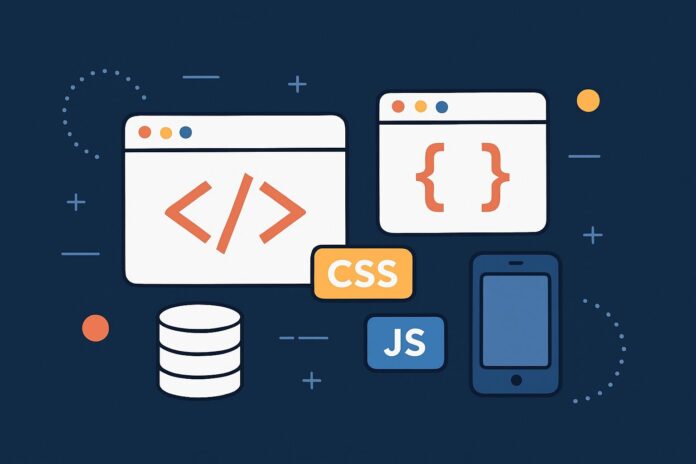Table of Contents
- What is Apache Kafka?
- Why Use Kafka with Node.js?
- Kafka Architecture Overview
- Setting Up Kafka Locally or with Docker
- Installing Kafka Clients for Node.js
- Producing Messages to Kafka Topics
- Consuming Messages in Node.js
- Handling Partitions and Offsets
- Error Handling and Retries in Kafka
- Kafka Streams and Event Processing
- Kafka vs Traditional Messaging Systems
- Performance Optimization Tips
- Security in Kafka (ACLs, SSL, SASL)
- Best Practices for Kafka in Production
1. What is Apache Kafka?
Apache Kafka is an open-source distributed event streaming platform used for building real-time data pipelines and streaming applications. It allows you to publish, subscribe, store, and process streams of records in a fault-tolerant and scalable manner.
Kafka excels in:
- Decoupling services through event streams.
- Enabling asynchronous microservice communication.
- Managing high throughput and low latency data ingestion.
2. Why Use Kafka with Node.js?
Node.js is often used for lightweight services, APIs, and real-time apps. Kafka helps by:
- Allowing real-time data pipelines and analytics.
- Handling asynchronous communication between services.
- Processing logs, metrics, or telemetry at scale.
3. Kafka Architecture Overview
| Component | Description |
|---|---|
| Producer | Publishes records to Kafka topics. |
| Consumer | Subscribes to topics and processes messages. |
| Broker | Kafka server that handles message storage. |
| Topic | A logical stream of messages. |
| Partition | Kafka splits topics into partitions for scaling. |
| Offset | Each message has a sequential ID within a partition. |
4. Setting Up Kafka Locally or with Docker
Option 1: Local Install
Install Kafka and Zookeeper manually from Apache Kafka Downloads.
Option 2: Docker Compose
# docker-compose.yml
version: '2'
services:
zookeeper:
image: confluentinc/cp-zookeeper:latest
environment:
ZOOKEEPER_CLIENT_PORT: 2181
kafka:
image: confluentinc/cp-kafka:latest
ports:
- "9092:9092"
environment:
KAFKA_ZOOKEEPER_CONNECT: zookeeper:2181
KAFKA_ADVERTISED_LISTENERS: PLAINTEXT://localhost:9092
KAFKA_OFFSETS_TOPIC_REPLICATION_FACTOR: 1
Start Kafka:
docker-compose up -d5. Installing Kafka Clients for Node.js
Popular client: kafkajs
npm install kafkajs6. Producing Messages to Kafka Topics
const { Kafka } = require('kafkajs');
const kafka = new Kafka({ clientId: 'my-app', brokers: ['localhost:9092'] });
const producer = kafka.producer();
const run = async () => {
await producer.connect();
await producer.send({
topic: 'logs',
messages: [
{ key: 'info', value: 'Log entry 1' },
],
});
await producer.disconnect();
};
run().catch(console.error);
7. Consuming Messages in Node.js
const { Kafka } = require('kafkajs');
const kafka = new Kafka({ clientId: 'log-consumer', brokers: ['localhost:9092'] });
const consumer = kafka.consumer({ groupId: 'log-group' });
const run = async () => {
await consumer.connect();
await consumer.subscribe({ topic: 'logs', fromBeginning: true });
await consumer.run({
eachMessage: async ({ topic, partition, message }) => {
console.log({
key: message.key?.toString(),
value: message.value.toString(),
offset: message.offset,
});
},
});
};
run().catch(console.error);
8. Handling Partitions and Offsets
- Each consumer in a consumer group is assigned a partition.
- Kafka guarantees order within a partition, not across topics.
- Manually committing offsets can give fine-grained control.
- Use
autoCommit: falsein KafkaJS if you want to control acknowledgments.
9. Error Handling and Retries in Kafka
- Wrap your logic with
try-catchand log appropriately. - Use retry strategies via
KafkaJSRetry. - Monitor dead-letter queues (DLQ) for undeliverable messages.
- Graceful reconnection and backoff strategies are essential.
10. Kafka Streams and Event Processing
Kafka Streams is a separate JVM library for real-time transformations on Kafka topics. Node.js doesn’t support Kafka Streams natively, but alternatives include:
- Use KafkaJS + custom processors.
- Send messages to a streaming backend like Apache Flink or Spark.
11. Kafka vs Traditional Messaging Systems
| Feature | Kafka | RabbitMQ / Others |
|---|---|---|
| Message Order | Within partition | Not guaranteed |
| Scalability | Excellent | Moderate |
| Storage | Persistent | Optional |
| Use Cases | Streaming, analytics | Queuing tasks |
12. Performance Optimization Tips
- Batch messages to reduce network overhead.
- Compress payloads using gzip.
- Optimize partition count for parallel processing.
- Use multiple consumer groups for different workloads.
- Tune linger.ms, batch.size, and fetch.max.bytes configs.
13. Security in Kafka
- Enable SASL/SSL authentication for brokers and clients.
- Use ACLs to restrict access to topics.
- Mask or encrypt sensitive data.
- Monitor with Kafka Connect, Prometheus, or Grafana.
14. Best Practices for Kafka in Production
- Use dedicated topics per service to avoid cross-talk.
- Monitor lag in consumers.
- Avoid large messages; break them into smaller ones.
- Handle idempotency in consumers to avoid duplication.
- Backup Kafka data using MirrorMaker or Connect.
Conclusion
Integrating Kafka with Node.js opens powerful possibilities for event-driven architectures, real-time data streaming, and microservice communication. With tools like KafkaJS, Docker, and best practices in place, you can build robust and scalable applications that react to events as they happen.


